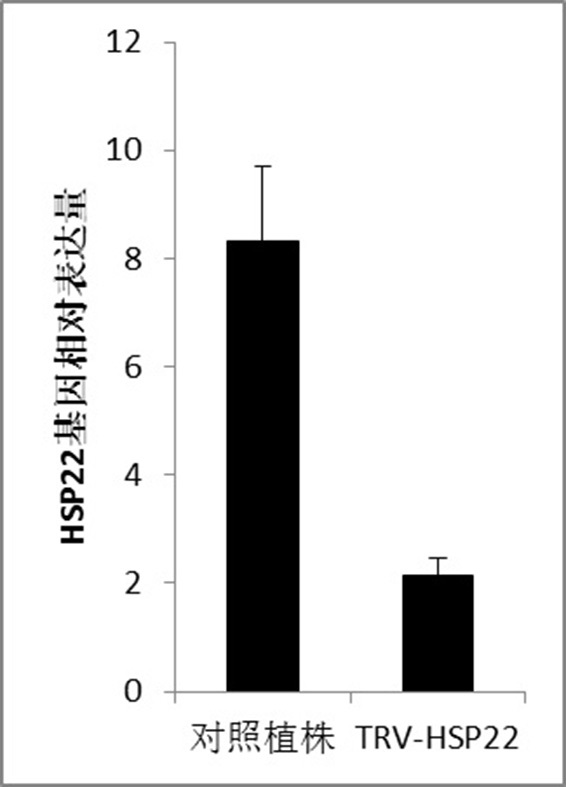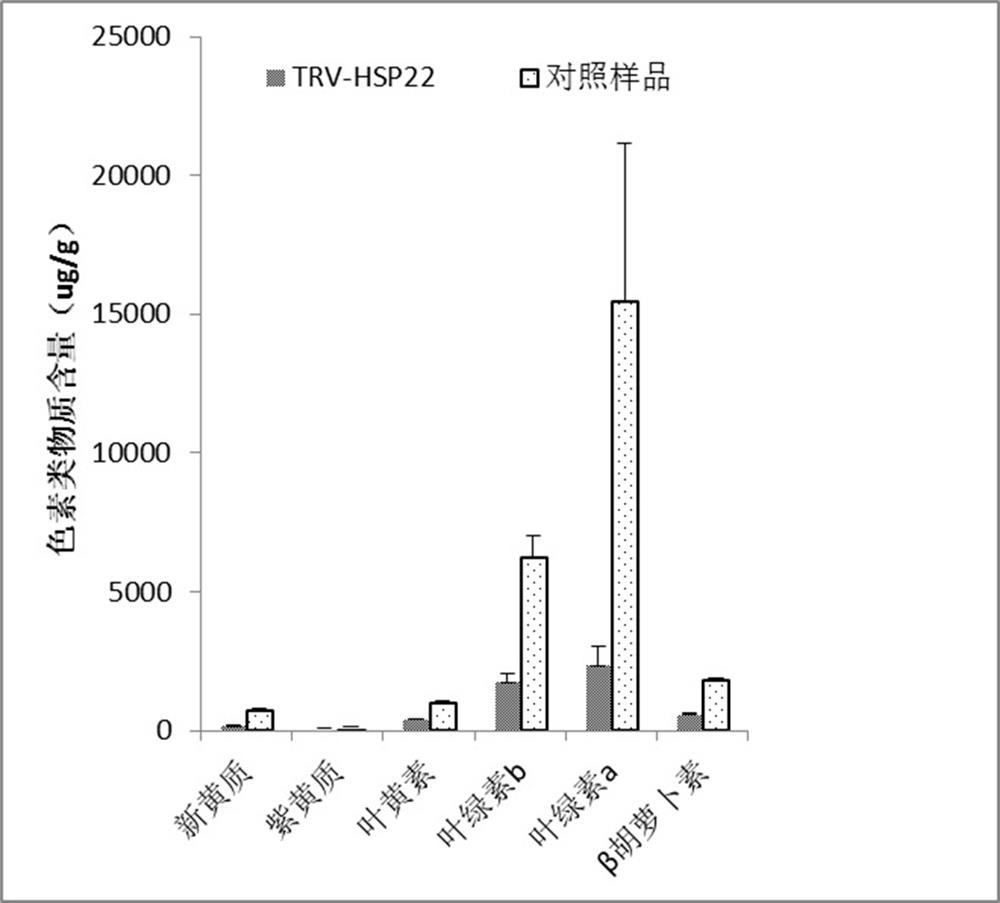Tobacco heat shock protein hsp22 and its application
A heat shock protein and tobacco technology, applied in the field of tobacco genetic engineering, can solve the problems of poor appearance quality, affecting the grade and quality of tobacco, producing harmful substances, etc.
- Summary
- Abstract
- Description
- Claims
- Application Information
AI Technical Summary
Problems solved by technology
Method used
Image
Examples
Embodiment 1
[0031] The present embodiment is briefly described as follows with respect to the construction process of tobacco NtHSP22 gene cloning and silencing vector.
[0037] The PCR amplification program is: 95°C pre-denaturation for 3 min; 95°C denaturation for 15s, 55°C annealing for 15s, 72°C extension for 30s, 34°C
[0038] The PCR amplification product was detected by agarose gel electrophoresis, and the electrophoresis product was recovered for subsequent use.
Embodiment 2
~
1.5 or so, then centrifuge at 4000g for 5 min, collect the bacteria, and then use MMA (1 mL (1 M) MgCl
2
; 1 mL
(1 M, pH 5.6) MES; 75 μL (200 mM) As), resuspend, adjust OD
600
= about 1.0;
[0056] After the final room temperature was placed for about 3 h, it was used as a bacterial solution for transfection.
(3) instantaneous conversion
With 3
[0059] The tobacco phenotype changes after injection for 3 weeks are shown in Figure 1. It can be seen that Agrobacterium infection with TRV2-PDS
The leaves of N. benthamiana at 4 w seedling age were used as the experimental material. Using a 1 mL syringe, the
The bacterial solution for transfection was prepared and injected into tobacco leaves, and the injected tobacco was continued to be cultured in an artificial incubator to observe phenotypic changes.
change.
[0063].
The new leaves of the plant had bleaching phenomenon, indicating that the infection was successful; while there was no significant change in ...
PUM
 Login to View More
Login to View More Abstract
Description
Claims
Application Information
 Login to View More
Login to View More - R&D
- Intellectual Property
- Life Sciences
- Materials
- Tech Scout
- Unparalleled Data Quality
- Higher Quality Content
- 60% Fewer Hallucinations
Browse by: Latest US Patents, China's latest patents, Technical Efficacy Thesaurus, Application Domain, Technology Topic, Popular Technical Reports.
© 2025 PatSnap. All rights reserved.Legal|Privacy policy|Modern Slavery Act Transparency Statement|Sitemap|About US| Contact US: help@patsnap.com



